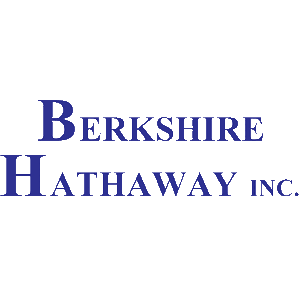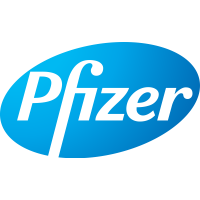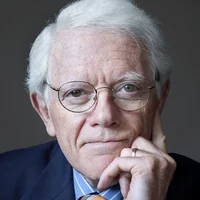
Great Panther Mining Ltd
TSX:GPR

Great Panther Mining Ltd?

| US |

|
Johnson & Johnson
NYSE:JNJ
|
Pharmaceuticals
|
| US |

|
Berkshire Hathaway Inc
NYSE:BRK.A
|
Financial Services
|
| US |

|
Bank of America Corp
NYSE:BAC
|
Banking
|
| US |

|
Mastercard Inc
NYSE:MA
|
Technology
|
| US |

|
UnitedHealth Group Inc
NYSE:UNH
|
Health Care
|
| US |

|
Exxon Mobil Corp
NYSE:XOM
|
Energy
|
| US |

|
Pfizer Inc
NYSE:PFE
|
Pharmaceuticals
|
| US |

|
Palantir Technologies Inc
NYSE:PLTR
|
Technology
|
| US |

|
Nike Inc
NYSE:NKE
|
Textiles, Apparel & Luxury Goods
|
| US |

|
Visa Inc
NYSE:V
|
Technology
|
| CN |

|
Alibaba Group Holding Ltd
NYSE:BABA
|
Retail
|
| US |

|
JPMorgan Chase & Co
NYSE:JPM
|
Banking
|
| US |

|
Coca-Cola Co
NYSE:KO
|
Beverages
|
| US |

|
Walmart Inc
NYSE:WMT
|
Retail
|
| US |

|
Verizon Communications Inc
NYSE:VZ
|
Telecommunication
|
| US |

|
Chevron Corp
NYSE:CVX
|
Energy
|
We'll email you a reminder when the closing price reaches USD.
If you don’t study any companies, you have the same success buying stocks as you do in a poker game if you bet without looking at your cards.

Utilize notes to systematically review your investment decisions. By reflecting on past outcomes, you can discern effective strategies and identify those that underperformed. This continuous feedback loop enables you to adapt and refine your approach, optimizing for future success.
Each note serves as a learning point, offering insights into your decision-making processes. Over time, you'll accumulate a personalized database of knowledge, enhancing your ability to make informed decisions quickly and effectively.
With a comprehensive record of your investment history at your fingertips, you can compare current opportunities against past experiences. This not only bolsters your confidence but also ensures that each decision is grounded in a well-documented rationale.
Do you really want to delete this note?
This action cannot be undone.

| 52 Week Range |
N/A
N/A
|
| Price Target |
|
We'll email you a reminder when the closing price reaches CAD.
Choose the stock you wish to monitor with a price alert.

|
Johnson & Johnson
NYSE:JNJ
|
US |

|
Berkshire Hathaway Inc
NYSE:BRK.A
|
US |

|
Bank of America Corp
NYSE:BAC
|
US |

|
Mastercard Inc
NYSE:MA
|
US |

|
UnitedHealth Group Inc
NYSE:UNH
|
US |

|
Exxon Mobil Corp
NYSE:XOM
|
US |

|
Pfizer Inc
NYSE:PFE
|
US |

|
Palantir Technologies Inc
NYSE:PLTR
|
US |

|
Nike Inc
NYSE:NKE
|
US |

|
Visa Inc
NYSE:V
|
US |

|
Alibaba Group Holding Ltd
NYSE:BABA
|
CN |

|
JPMorgan Chase & Co
NYSE:JPM
|
US |

|
Coca-Cola Co
NYSE:KO
|
US |

|
Walmart Inc
NYSE:WMT
|
US |

|
Verizon Communications Inc
NYSE:VZ
|
US |

|
Chevron Corp
NYSE:CVX
|
US |
This alert will be permanently deleted.


























Thank you for standing by. This is the conference operator. Welcome to Great Panther Mining's First Quarter 2021 Results Conference Call. [Operator Instructions] The conference the is being recorded. [Operator Instructions] I would now like to turn the conference over to Fiona Grant Leydier, Vice President, Investor Relations. Please go ahead.
Thank you, operator. Good morning, everyone. I'm Fiona Grant Leydier. Thank you for taking the time to participate in our call today. Before we begin, please note that we will be making forward-looking statements during the presentation. You should be cautioned that actual results and future events may differ from those noted in today's presentation. The commentary also refers to various non-GAAP measures, definitions and reconciliations that are included in the company's MD&A for the 3 months ended March 31, 2021. All dollar amounts expressed in this presentation and the associated financial statements and MD&A are in U.S. dollars unless otherwise noted. For reference, during the call, AISC refers to all-in sustaining costs. Detailed cautionary statements can be found at the end of the presentation. I would like to remind everyone that this conference call is being recorded and will be available for replay later today. Replay information and the presentation slides accompanying this conference call and webcast will be available on our website at greatpanther.com. On the call this morning we have Rob Henderson, President and CEO; Neil Hepworth, Chief Operating Officer; and Shawn Turkington, Vice President of Finance.
Thanks Fiona, and thank you, everyone, for dialing in today. It's now been just over a year since the global COVID-19 pandemic began, and people everywhere have been affected in one way or another. Our business has had to adapt in ways we never imagined. But I'm very proud of how the team at Great Panther has adapted to our new health and safety protocols while continuing to successfully conduct our business. The pandemic has undeniably impacted efficiencies at our operations, and I have immense appreciation for the team, delivering as they have, even amidst these adverse conditions. I'm pleased to report that operations continue safely despite COVID-19, and we remain on track with our proposed guidance for the year. The first quarter is typically a low production quarter for us due to the rain in Brazil. And our consolidated metal production in the first quarter of 2021 was 30,556 gold equivalent ounces, inclusive of 24,978 ounces of gold and 360,000 ounces of silver. We are benefiting from a strong metals price environment for both gold and silver, which resulted in revenues of $52.6 million, an increase of 9% over the same quarter last year, and mine operating earnings of $11 million, which is an increase of 85% when compared with Q1 2020. The weak Brazilian real, in relation to the U.S. dollar had a positive effect on costs with our all-in sustaining costs, excluding corporate G&A, coming in at $1,557 per ounce of gold sold, which is a decrease of 11% over Q1 2020. Our adjusted EBITDA increased to 94% over Q1 2020 to $12.4 million, and cash flow from operating activities before changes in noncash working capital was $7.3 million compared with $0.9 million in the same period last year. We ended the quarter with a strong balance sheet, with $45.5 million in cash and cash equivalents, and we reduced our debt position to $27.6 million. But our primary focus for 2021 is untapping the potential at Tucano. In the 90-kilometer by 30-kilometer tenement package that we wholly own in Brazil. This really is a year for the geologists. And to that end, this quarter, we saw a significant ramp-up in drilling at Tucano with a 68% increase in meters drilled over the same quarter last year. Our exploration team is headed up by Nick Winer, a seasoned geologist with extensive experience, particularly at Tucano. We plan to do 60,000 meters at Tucano this year, and we have 4 exploration drills on the sites with another 2 rigs on their way. The 3-pronged exploration program will focus on near-mine open pit targets, underground targets as well as the regional targets. In March, we announced encouraging results from the open pit drill program, which is focused on the shallow TAP C pit, which is located between the TAP AB pits and the Urucum pits that are currently in production. These results demonstrate the continuity of open pit-able sulfide mineralization below the current TAP C pit floor. I'll now turn it over to Neil Hepworth, our Chief Operating Officer, to discuss the operations in more detail.
Okay. Thanks, Rob. Focusing first on Tucano, gold production for the quarter was 22,996 ounces compared with the 26,176 ounces in Q1 2020. This is a 12% decrease, but it's attributed to the lower ore production in the mine, reduced process plant availability in lower grades. Tucano processed a higher proportion of low-grade stockpile material this quarter due to the focus on stripping of the upper levels and position of mining activity relative to the ore in the lower benches. Production was also affected by seasonal weather and a disruption to our oxygen supply. During the wet season, normally from January through June, production rates are lower than during the dry season, which is normal July into December. Purchase of oxygen supply was affected as scheduled deliveries were redirected to Brazil's hospitals to meet much needed demand related to the pandemic. Shortages in the purchased oxygen supply are expected to decrease recovery rates and reduce throughput at Tucano over the next few months. AISC for the quarter was $1,549 an ounce. This is a 12% improvement over Q1 2020, which is mainly due to the weakening of the Brazilian real. As Rob said, we had 4 diamond drill rigs turning in this quarter focused on near-mine resource definition specifically at TAP C open pit and Urucum North underground. The focus on the Urucum North underground drilling is to better define the upper high-grade shallow north-plunging ore shoot, specifically looking at the up-plunge area to the south to guide location of an exploration and underground access run. In Q1, approximately 2,800 meters were drills of the 8,000 meter drill program. Okay. Turning to TAP C. The initial results from TAP C open pit drill program were announced subsequent to the end of the quarter. In the first phase drill program conducted in Q1, the grades in which we are seeing are good, but what excited the team most at these results is that these results indicate continuity of the mineralization down to 70 meters below the current pit, which is sitting at 50 meters deep. These results have helped us put together a high confidence model that is being used to target further testing in the second phase drill program currently underway. We believe that this new model and ongoing drilling will allow inclusion of the TAP C open pit in the next mineral resource statement for Tucano. In Mexico, our focus on stricter management controls in our stopes is resulting in reduced dilution and improvement in grades. At the Guanajuato Mine Complex, a total of 279,306 silver equivalent ounces were produced with silver recoveries of 86.1% and average solvent grades of 124 grams a tonne. Total recoveries were 86.5% and the average gold rate was 1.53 grams per tonne. Production was down 29% over Q1 2020, mainly because of lower throughput due to COVID-related workforce shortages. This was essentially reduced supervision due to vulnerable workers being -- staying at home. The AISC was $332 per payable ounce of silver compared with $14.21 in Q1 2020. This is reflecting the lower sales given lower production and higher local currency operating cost that were partly due to some one-off costs related to restructuring and COVID. At Topia, the total production was 363,318 silver equivalent ounces, a decrease of 3% compared to Q1 last year. Average grades of 398 grams per tonne silver and 0.87 grams per tonne of gold were achieved, along with byproducts of lead and zinc. Metal recoveries were 92.4% for silver and 55.4% for gold. AISC per payable ounce was $18.71 versus $17.73 in Q1 2020 due mainly to higher local currency operating costs and lower input due to COVID-related workforce shortage. In this case, it was mass tests that just took place over a couple of weeks. At Coricancha, our development project in Peru, negotiations with the local community were advanced and work started in preparation for the planned drill program in Q2. This drill program is targeting high-grade zones that are readily accessible to mine. I will now turn the call over to Great Panther's Vice President, Finance, Shawn Turkington, to discuss our financial results.
Thank you, Neil. The strong metal price environment we are experiencing has provided great tailwinds for our financials over the last year. Q1 2021 saw revenues of $52.6 million, an increase of 9% over Q1 2020, thanks to higher realized metal prices of $1,750 for gold and $25.35 for silver, representing an increase of 11% and 66%, respectively. This in turn led to an increase of 85% in mine operating earnings to $11 million from $6 million in Q1 2020. Consolidated AISC [ approval ] on sold, excluding corporate G&A, was $1,557, an 11% decrease compared with Q1 2020, mainly due to the benefit of a weakening Brazilian currency and higher average realized metal prices. During the quarter, we settled the final forward exchange contracts that were entered into at the end of 2019 and early 2020 as part of our risk management strategy to reduce the exposure of our costs at Tucano due to foreign exchange fluctuation. The weakness of the BRL all experienced in Q1 2020 contributed to a net loss in that quarter of $4.5 million. For the current quarter, our net loss was $300,000; adjusted EBITDA of $12.4 million, an improvement of 94% over the same quarter in 2020. Currently, we have no forward currency contracts in place. Cash flow from operating activities before changes in noncash working capital was $7.3 million, a significant improvement from $894,000 in Q1 2020. During Q1 2021, we also paid down borrowings of $5.8 million, bringing our total borrowings to $27.6 million at quarter end and closed the quarter with $45.5 million in cash and cash equivalents. Thank you. That's all we have for formal remarks. I will now turn it back to the operator for the Q&A.
[Operator Instructions] And the first question comes from Heiko Ihle with H.C. Wainwright.
This is Tyler Bisset on for Heiko. You provided some drill results for Tucano on April 7 and reiterated the focus on drilling in your news release today. You previously had a focus on the Tap C pit situated between the Tap AB and the Urucum pits that are the current focus of production at Tucano. Can you walk us through your focus and plans for the rest of the year in a bit more detail? And what are you seeing with cost and timing for drill results?
Sure. I appreciate the question. Yes. We released the results because we were thought they're pretty significant in that we have discovered mineralization on the existing 7-kilometer trend that is beneath some very shallow pits. So the results were to essentially model the geologic continuity of the vein. So we have the proof of concept now. We know that these veins are -- exist beneath a pit so it's very minable material. It's about 3 kilometers from the plant, so it's easy truckable. And the second phase of the program is essentially to do infill drilling to bring those resources onto the books so we can put them on to the mine plan. So the second phase of TAP C is essentially infill, to bring them to mineral resources. The other 2 prongs of our exploration program are -- and the biggest one is the region. We have the 90-kilometer by 30-kilometer region, which is essentially undrilled. So Nick Winer is proving up targets, and we hope to get diamond drills into some of them this year, and that really would be a game changer once we find a regional discovery. And what we're looking for is more open pit material that we can truck to our 10,000 tonne a day mill. And then the last one is the underground. The underground is very intriguing. It's 4- to 5-gram a tonne, it lies directly beneath our northern most pit, which is the Urucum pit. And the Urucum pit is scheduled to be complete next year. So we would have the opportunity to start drilling underground there. So we're doing some more drilling on the underground to prove up exactly how much we could potentially get from an underground mine at Urucum. So the work is -- we're doing there is in order to prepare ourselves for the potential of going underground in Urucum once the pit is depleted.
Perfect. Appreciate that. And...
Okay. I was just going to add a little bit to that as well, because I mean, we're pretty excited about these TAP C results because if you remember, I mean, we took a huge hit on our resources in 2019. And a lot of that resources was actually material that was removed from the TAP C resource base, because basically because RPA didn't understand the model. And now we've got Nick Winer, who happens to be an expert in structural geology, geophysics and geochemistry. He's put together a new model and he's busy sort of tweaking it at the moment. But it's quite exciting because it means we've got a good chance of recapturing a lot of those reserves without -- or resources from 2018 without doing a huge amount of drilling.
I appreciate that. And any sort of timing on when you might expect drill results from phase 2?
Well, I mean, we're basically aiming to have a new MRMR out before the end of the year. So we'll probably be shutting off the drilling round about the end of July. I mean we're bringing in these 2 extra rigs. And among these basically, I mean, the pit's sort of 50 meters deep and they basically stopped at the base of the oxide. And it actually lends itself to our sending in the RC rig and drilling a fairly closed pattern of holes in there so we could and that with a pretty good idea of what we're going to be mining. So, yes. I think I think towards the end of July, we'll be cutting off the drilling and sometime October, November, we should be coming up with the revised MRMR for that.
Perfect. And then just kind of building on that, you had expected the inclusion of TAP C in the next mineral reserves and resources statement for Tucano. Has any new information surfaced in the last 30 days or so that you could use to provide some color on the future for this area?
No. I mean, no, not really because I mean we're still doing -- I mean, what we'd started off doing was doing a series of holes along the entire strike length. And they all came up positive showing that we've got extension of the mineralization. Now we're starting to sort of fill in a little bit on those holes. It's showing the same thing. Not so -- so nothing particularly new on that at this stage. I think that once we -- once sort of Nick finishes off the model and that we get the RC drilling done, then I think that's -- then, I think we might end up with another sort of press release before the MRMR.
Perfect. Appreciate that. And one last question, guys. You stressed the workforce shortages that you experienced during the quarter at the GMC and Topia Mines. Are you seeing any meaningful issues in April and May thus far?
No, not really. I mean, this is part of the restructuring cost that we picked up at GMC. Unfortunately, I mean, a lot of these people that -- we're having to sort of reorganize the workforce a little bit and bring in a lot of new people to make -- to actually cover those shortages. So yes, so I think that's -- we don't expect -- we're expecting things to get better, not worse in terms of the people shortages related to COVID.
The next question comes from Joseph Reagor with ROTH Capital Partners.
Okay. So first thing, on capital spending, it was a bit elevated. I think Q1, I think that was part of the plan was for it to be, I think, first half elevated was the prior conversation on that. What should we expect for total CapEx rest of the year?
Yes. Thanks, Joe. Yes. As noted, the first half of the year is very biased towards stripping costs at Tucano. So it's just the mining phase we're in. So yes, we've got to do a lot more capital stripping in Q1 and Q2, and then we get into higher grades lower down. Shawn, I don't know if you have the details on CapEx spend for the year, but certainly, most of it is in the first half.
I don't have the full numbers, but thanks for the question. The deferred stripping costs are heavily weighted towards Q1 and tail off by the end of Q2. And those are the bulk of our capital costs during the year. So we'd expect the Q2 costs will be significantly lower than Q1, and we don't expect significant deferred stripping in the second half of the year.
Okay. And then, as far as the first quarter went with that, was it in line with the expectations, a little higher, a little lower?
Our costs were in line with our expectations.
Yes, pretty much in line. Things never go in a straight line. You have some highs and some lows. And yes, we -- I think overall, the team did a really good job and then delivered what they intended to deliver.
Okay. One more on Tucano. You guys processed a very high percentage of the low-grade stockpiles in Q1. What should we be modeling as far as percentage of total tonnage on a quarterly basis that's coming from those low-grade stockpiles compared to fresh ore?
Yes. The first 2 quarters, yes, we are putting stockpile through because the mining phase is associated with overburden. We do get into the higher grades. So the grades pick up considerably in the second 2 quarters. So consequently, the stockpile material drops down. So what we'll see is we go down to pick up in Q3 and Q4 because we stopped mining the stockpiles. So yes, the Q1 and Q2, we are seeing a lot of stockpile material come through Q3 and Q4. There won't be nearly as much, so grades go up significantly. And it stays the same but grade goes up because we are into the better ore in the pits in Q3 and Q4.
Okay. Okay. That's fair enough. And then just one on GMC. You guys gave a little bit of color in the release and in your comments on operating costs at GMC being elevated in the quarter. I think you guys referenced lower, lower total ounces and slightly higher operating cost. But any color on what you're expecting next quarter to look like and the rest of the year to look like? Obviously, the $22.57 was quite elevated on a cash cost basis.
Yes, it is. And as Neil said, I think GMC has probably been one of our facilities that have been most impacted by COVID, just -- that affects your labor productivity and your ability to mine safely. So we did see a number of inefficiencies at GMC in the quarter and COVID cases have dropped significantly. So we do expect things to get better going forward. So we would expect GMC to get back on track, and they are improving as we speak. So I think GMC, we can expect much better results from in the second half of the year and particularly as silver price gets to where it is now, the ability to generate cash improves significantly at GMC.
I mean, Rob, could I just add a little bit to that?
Yes.
I think one of the -- I mean, as I said, there's been a fair amount of sort of restructuring at GMC that cost us quite a bit of money, but it's probably worth it, but one of the things that we've done is we brought the General Manager from Coricancha, and he's now located at Guanajuato, working at the GMC Mine. And this guy is an exceptionally strong manager technically and in terms of dealing with people. And he's already sort of like grasped things extremely firmly. And one of the things he's jumped into is the dilution and dilution control. So there's a huge amount of work that's going on there in terms of getting that sort of under control. So I think the things -- I think he's also looking at introducing another shaft to the mine in some of the places where we've got the reasonable ventilation. So I think things are going to be moving forward extremely positively in this quarter and in the next quarter going onwards. That's my contribution.
The next question comes from Matthew O'Keefe with Cantor Fitzgerald.
Just a couple of questions for me. First off, can you talk a little bit more about the oxygen shortage and the impact that it's going to have? I mean, basically, how badly does that impact recoveries sort of quantifiably? And how long -- what's the best estimate for getting your supply back?
Shall I take this, Rob?
I'll take it.
Okay.
Yes. That's -- I think what you've seen in the results said recoveries are impacted by about 2% to 3%. We do have a supply of oxygen, but it's not a good stuff. The good stuff was diverted to hospitals to help with the COVID case. The good news is that we do have oxygen back at site again, it came on last week. So that to me, it indicates 2 things: one, the hospitals are not urgently needing oxygen anymore, so that's really good for the communities. And two, we do have oxygen back again at our plant. So we expect recoveries to get back up again to where they should be, I think in the 91%, 92% range. So of course, oxygen could disappear again if COVID hospitals need it. But right now, things are stable, and we have our oxygen supply back, so it's good news.
Okay. So that 88.6% recovery, that was reflective -- that you had this quarter was reflective of the oxygen shortage?
Correct.
Okay. Got it. Okay. And then as far as -- we're always struggling here a little bit with the grade profile at Tucano quarter-to-quarter. I guess it was about 0.9% feed grade -- I'm sorry, 0.9 grams per tonne feed grade this quarter, first quarter. Similar for the second quarter? Do we see a little raise there and then higher in Q3, Q4? Like is it ramping up? Or is it a step-up?
Yes. It's really -- it's a story of halves and up quarters. The first half of the year, the second quarter is going to be similar, maybe a little bit better than the first quarter. But the big increases come in Q3 and Q4. That's when we're into the high-grade ore.
Right. Is that -- okay, similar to what we saw in sort of the second and third quarter of 2020 kind of range?
Yes, I don't have the numbers on hand, but certainly, the budget for this year is...
Like 1.3, 1.4 grams or...
55% of our production comes from the second half of the year and 45% comes from the first half, so you can use that math.
Okay. So we're still holding our guidance? You're still holding to the original guidance for the year?
That is correct.
Okay. Okay. Yes, that was it for me. I mean, all eyes on Tucano and really looking forward to the -- to ongoing explorations -- some exploration success.
Thanks, Matt.
[Operator Instructions] The next question comes from [ Spencer Lemann ], a private investor.
I came in a little bit late, so I might have missed if you've commented on the GMC tailings and that situation. Did you talk about that yet?
Neil can address that question.
Yes. The situation at the moment is that we've got sort of 2 embankment raises in the process of being permitted, that's lifts 18 and 19. And what happened is that the environmental people have handled it. Obviously, the water authority is CONAGUA, to basically -- to give their ruling on it. They're looking after the big dams now. So we're still waiting for CONAGUA to get back. We should have actually already had the results about a month ago, we should have had it. But unfortunately, they changed the director at CONAGUA. So that's delayed things a little bit. So in the meantime, we've done some modifications to the way that we put the material in there, the way we deposit. And we've managed to gain ourselves some capacity up until the first week in July. So we're hoping that this will be resolved. The new director should have sort of like sort of bedded themselves in by now and being able to sort of make some decisions and things. And we're obviously pressurizing them all the time to do that. But -- so we're hoping that that's going to come about. Now we have a couple of plan Bs, but I'm not sure whether they've sort of fully just disclosed yet. Rob? Can I talk about toll milling?
Sure.
Yes. So we've been approached by one operator that's sort of within reasonable trucking distance of Guanajuato, that could take at least all of our production from the Guanajuato mines. So we have that sort of plan B. And there's other people around us as well that could possibly take some of the San Ignacio. So the plan A is that we sit tight and keep on pressurizing CONAGUA for that permit. And the plan B, is that we go toll milling. Now we've already done a whole bunch of sums looking at what sort of rates we need to do this and it doesn't look that bad to be -- funnily enough. But anyway, that's the situation at the present.
This concludes the question-and-answer session. I would like to turn the conference back over to Rob Henderson for any closing remarks.
Thank you, operator, and thanks, everyone, for their time today. Just to emphasize that our consolidated production guidance remains unchanged at 135,000 to 150,000 gold equivalent ounces. We do expect the second half of 2021 to account for over 55% of this production and our AISC to be within guided range as we move into the better sectors at Tucano. I'm pleased to report that we ended the quarter with a healthy balance sheet. Our mines are performing as expected, and our exploration is delivering results that will contribute to the future at Tucano. So on behalf of everyone here at Great Panther, I look forward to sharing our progress with you in the next quarter, and thank you for your time today.
This concludes today's conference call. You may disconnect your lines. Thank you for participating, and have a pleasant day.